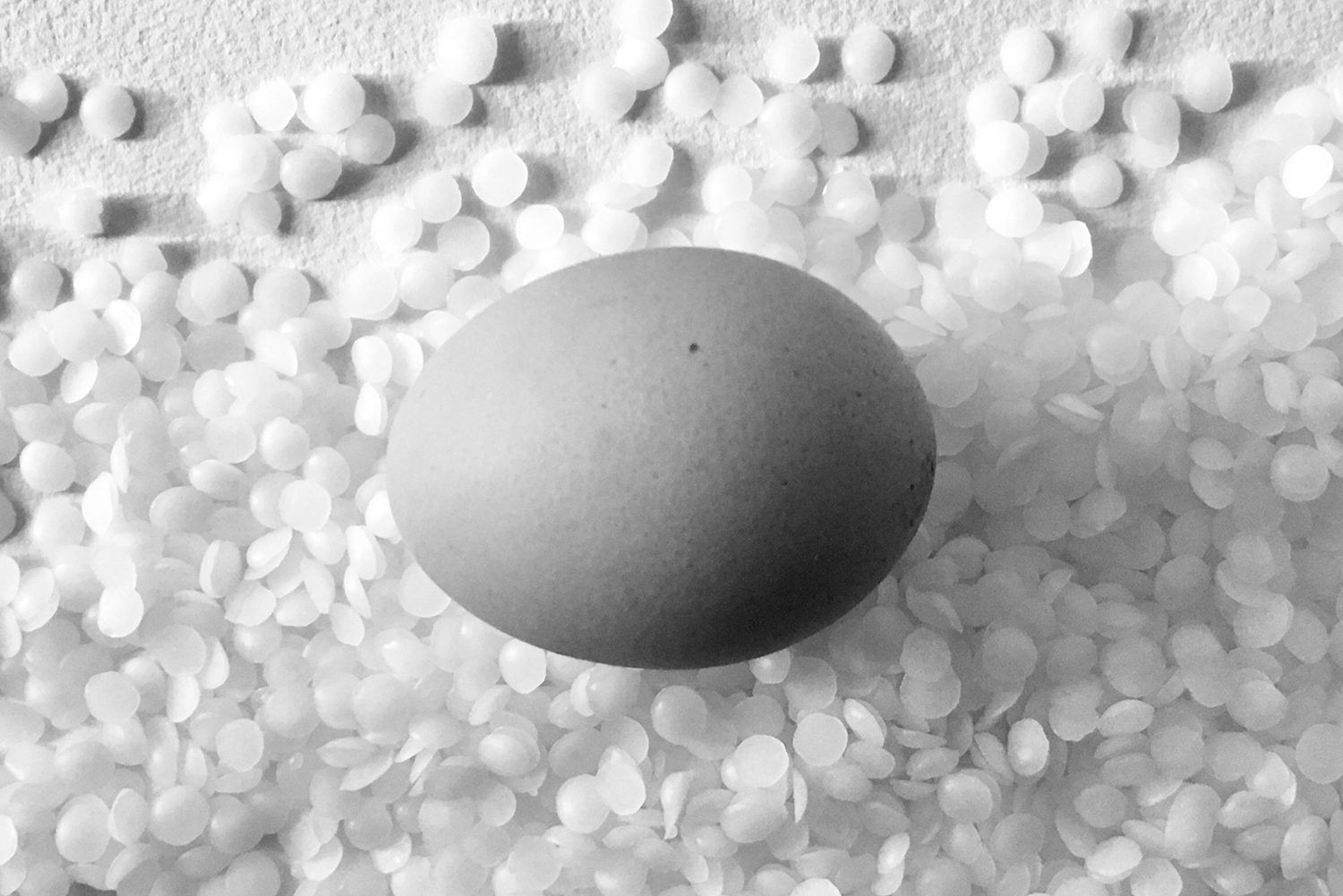To open our Material Matters: Pigment series, six of our expert practitioners were invited to respond to a question by Robin Mason, artist and Head of the Fine Art Department here at the Art School. The following is an edited transcript of their discussion.
Defining Pigment, with Keith Price, Head of Foundation Diploma in Art & Design
ROBIN MASON: Keith, you have specific thoughts about what constitutes a pigment, can you share a definition with us?
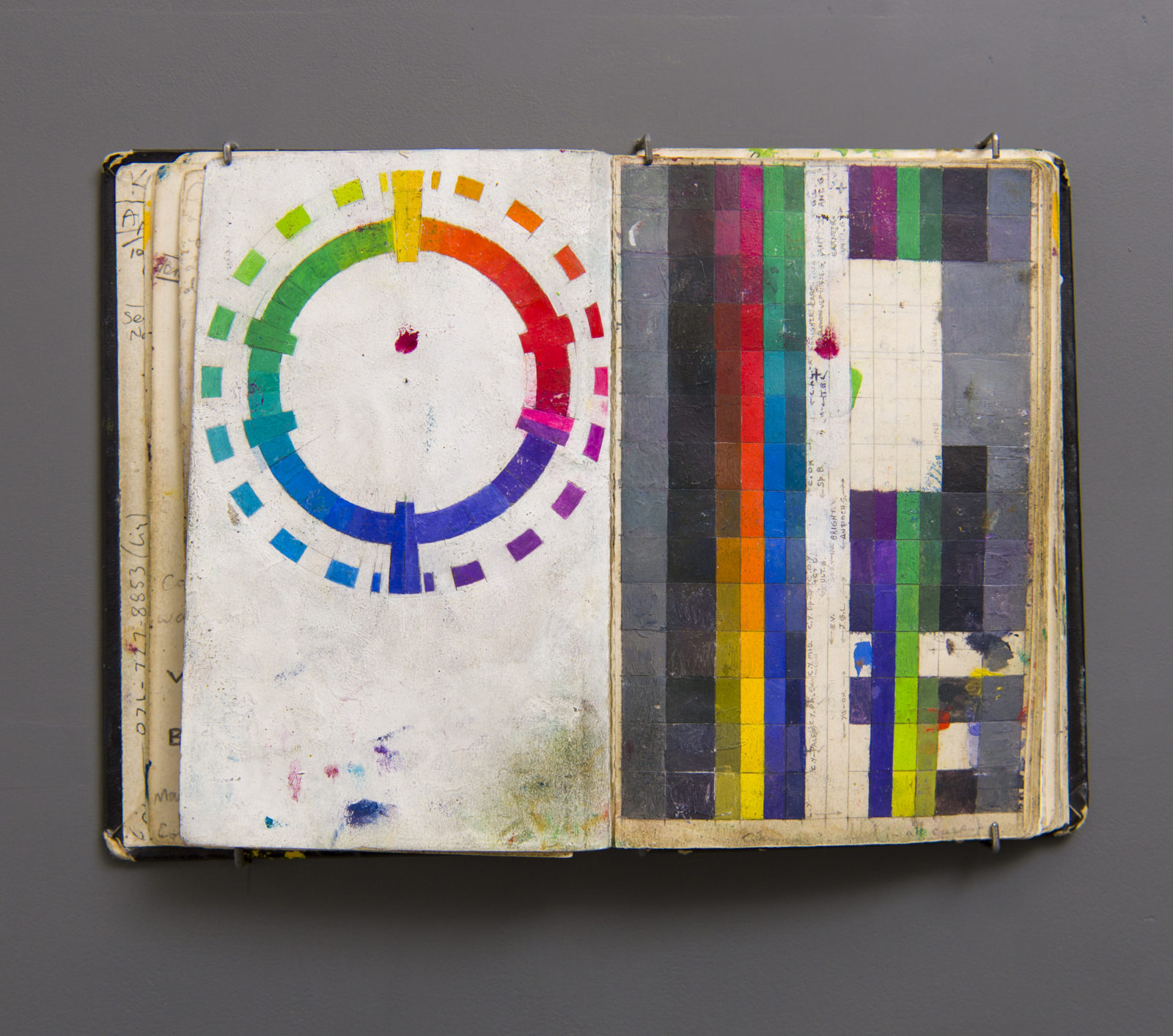
KEITH PRICE: In the manufacture of artist’s paints a distinction can be made between the use of pigments and the use of dyes. Strictly speaking a pigment is an insoluble colouring material, which can be ground into a powder, suspended in a vehicle or medium such as acrylic, oil, water etc., and applied to a surface. A dye is a soluble colouring agent. Many of the paints that you can buy now are prepared by the precipitation of dyes with inert, colourless binders. Historically, paints prepared in this way were called ‘lakes’, or sometimes ‘lake pigments’, but the word lake is usually omitted these days and the word pigment is therefore used more indiscriminately to describe any colouring agent, or material.
Identifying Pigment, with Dr Tracey Chaplin, Lecturer, Conservation Department
ROBIN MASON: From a conservator’s perspective the naked eye takes second place when it comes to discovering the make up of painted surfaces and substructures, could you share with us the challenges and, if any, the limitations of the microscopic analysis of pigments? Do the decisions based on the scientific analysis alter the aesthetic outcome of conserved or restored artwork?
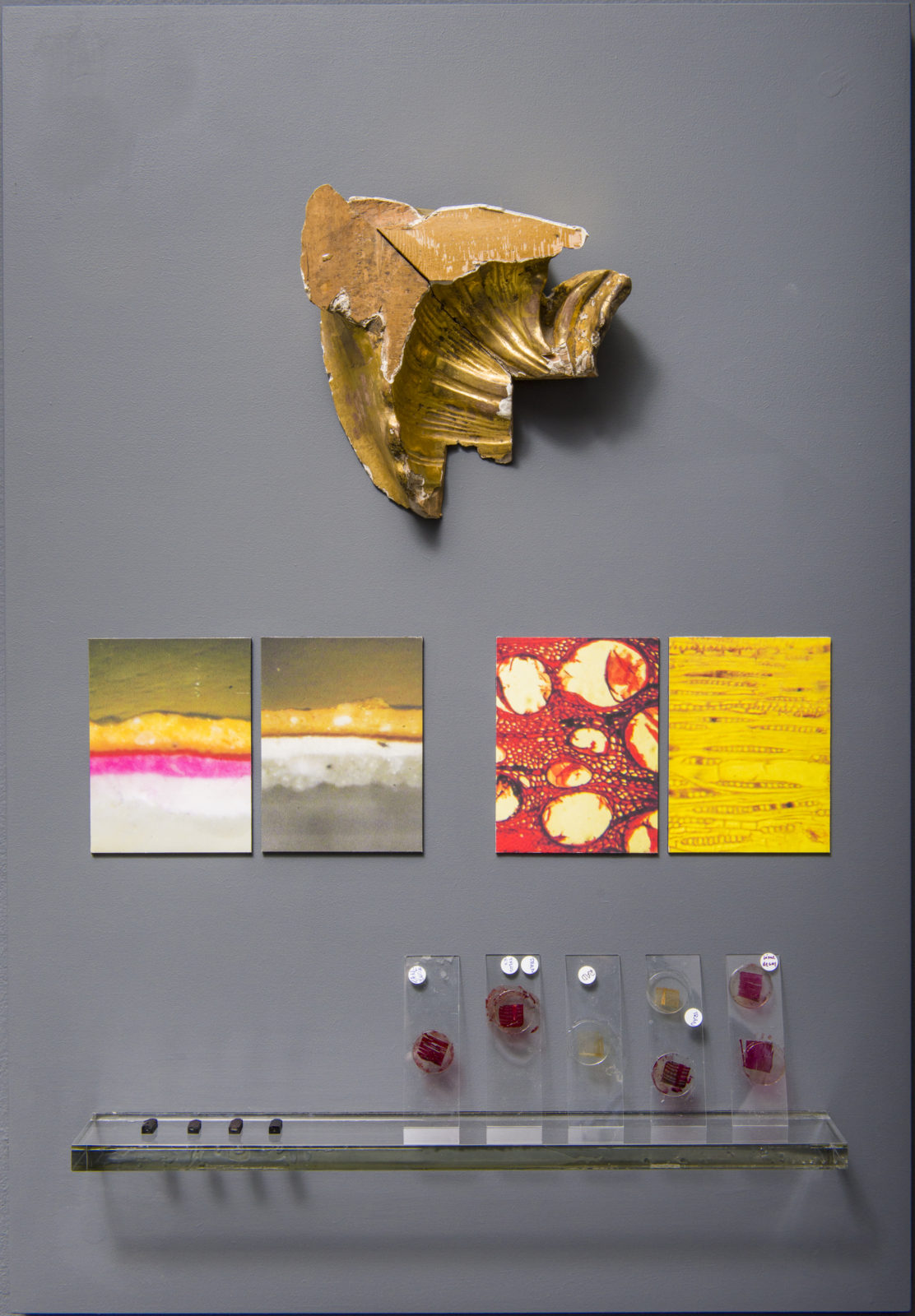
TRACEY CHAPLIN: Microscopic analysis of pigments provides an immensely useful way of discovering in detail the make up of a painted surface. It allows us to understand what mixtures of pigments have been used to create a single coherent surface colour, how artists have constructed their paintings and, in particular, it helps us determine which paintings are fake and which are the real thing.
One of the main challenges for pigment analysis is being able to take samples, which are small enough to be unnoticeable but large enough to contain enough information to be useful. Fortunately many analytical techniques used in pigment analysis are becoming more sensitive so that less material is required. The other major challenge in my area is to stay one step ahead of the forgers. There is a wealth of information available now on pigments and certain artists’ practices; ‘good’ forgers are able to access this and use suitable materials for their purposes. Microscopic analysis of their work is important to show minor inconsistencies, which reveal that they are not by the intended artist. However, there are some artists for whom there is very little information known about their methods and materials, so that comparing questioned artworks is difficult. I would certainly urge current artists to keep records of the materials they use for their works of art.
The limitation of basic microscopic analysis of pigments is the very fine-grain size of modern materials. Using a standard microscope, these particles are too small to see and so it is difficult to be able to distinguish between them. Other more high-tech analyses (such as a scanning electron microscope or Raman microscope) are used in these cases.
Scientific analyses of pigments and media can allow a conservator or restorer to make more informed decisions about the painted surfaces they are working on. The analyses may affect their choices of pigments or media to be used (to ensure they are different from the original paints and can therefore be distinguished from them), or how they choose to stabilise a surface, but they will still need to achieve the desirable aesthetic quality of finish through their own skill of application.
The DNA of Pigment, with Amikam Toren, Lecturer, Fine Art
ROBIN MASON: Amikam, your career as an artist is largely based on paintings where you have made your own ‘paint’. However your choice of pigment to bind with the acrylic binder is always deeply significant, with the original material used as the ‘pigment’ questioning assumptions and focusing on the materiality of the paint. Could you tell us about two works in particular 1: the painting of the memory of the teapot and 2: the series of self portraits using the daily shavings of your beard with an electric razor as pigment.
AMIKAM TOREN: My interest as an artist is in the idea of representation (as a possibility or impossibility). In 1979 it brought me into contact with painting. Representation was an important part of what has been done in the art of painting and I wanted to address it. ‘Neither a Teapot nor a Painting’ was the first work I made at that point. My intention was to make a ‘painting’ that would link form with content. To that extent the process I performed was more important than the image I painted. Breaking the teapot, pulping some of the fragments to dust (pigment), mixing the dust with colourless binder to make paint. The image painted on a small canvas is life size and is painted as if it was nothing more than a record of the now destroyed object. The remains of the object are stuffed in a jar and placed on a shelf that supports the painting too. In many ways this is a stand against the dictatorship of image making (although this is an important point, remember to smile here).
‘Blue Beard’ is a self -portrait in time, begun in 1997 and on going. Portraiture was an important element to appropriate within my approach to representation. But I did not want to use bodily fluids such as faeces, blood or urine. It was not until I looked at my facial shaving and saw how much like pigment it looked that I saw an opening for a time based painting. Every three months a painting is made. I shave every morning and collect the shavings as pigment, which at end of three months, I mix with colourless acrylic binder to make paint. Each painting is the size of my bathroom mirror and supports no image. When exhibited, the paintings are hung on the wall as a time line. Below each painting there is a pencil line that dates each painting.
Selecting a Pigment, with Alison Seed, Lecturer, Conservation Department
ROBIN MASON: Alison, with acrylic medium now being one of the reversible binders of choice in contemporary approaches to painting conservation and restoration, could you talk about the challenges this mixing of mediums creates in the layering of restorative activity and which medium of choice you would ideally prefer for holding pigments when mixing and working with pigment?
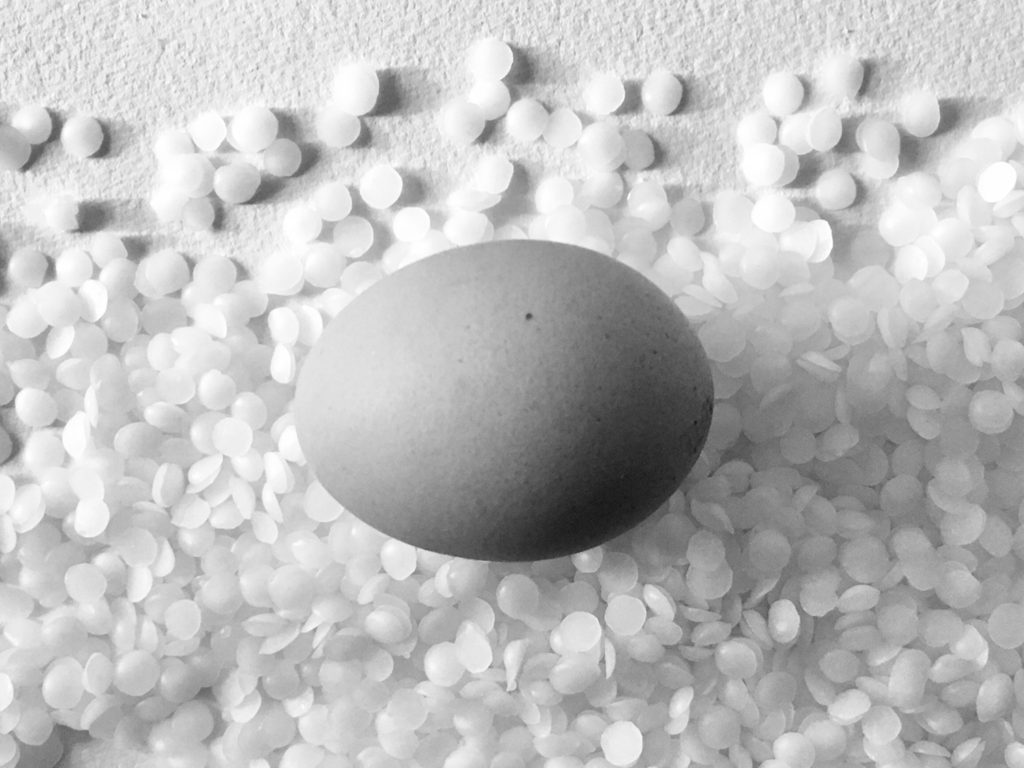
ALISON SEED: In the recent history of painting conservation, conservators have had the option of mixing dry pigments with a number of different synthetic binding media. We often choose modern synthetic binding media for conservation as these do not yellow over time, remain reversible, and are chemically quite different to original historic paint surfaces. As a conservator working on a range of both historic and contemporary paint surfaces I would always choose the binding medium, which is most appropriate to the type of work of art I am working on. There are many approaches to materials and techniques for retouching, but one of most thrilling aspects of mixing pigments with binding medium is that the conservator has complete control over colour and gloss; sometimes only the right earth colour can be achieved by hand selecting the pigment, rather than depending on a paint manufacturer’s choice. There are mediums that are better suited to opaque matt surfaces, and mediums more suitable for paintings with higher gloss and glazes.
One of my personal favourite retouching methods is using egg tempera, which mixes dry pigments with both the egg yolk and egg white. This technique has been used for retouching since the nineteenth-century developed by artists/restorers skilled in using it for their own paintings. I find it is best suited to areas of large losses within paintings, as the fast drying egg medium allows for layers to be built up in quick succession, and the optical properties of layering the egg tempera paint can create one of the best imitations of the original oil paint layer. The relationship between pigments and media also means that this technique creates paint layers with greater opacity than many synthetic alternatives. Additionally, conservators have the option of burnishing the egg tempera, retouching with an agate stone, which changes the saturation and using interlayers of varnish, which also adds saturation and aids with reversibility. There is an art to retouching with egg tempera and I always enjoy the process.
Pigment in Contemporary Practice, with Andrew Grassie, Lecturer, Fine Art Department
ROBIN MASON: Andrew, with all the possible pigment available, you choose 6 specific colours to work with – can you tell us why and also the reason for your engagement with the tradition of egg yolk as a binder in the production of your very contemporary paintings?
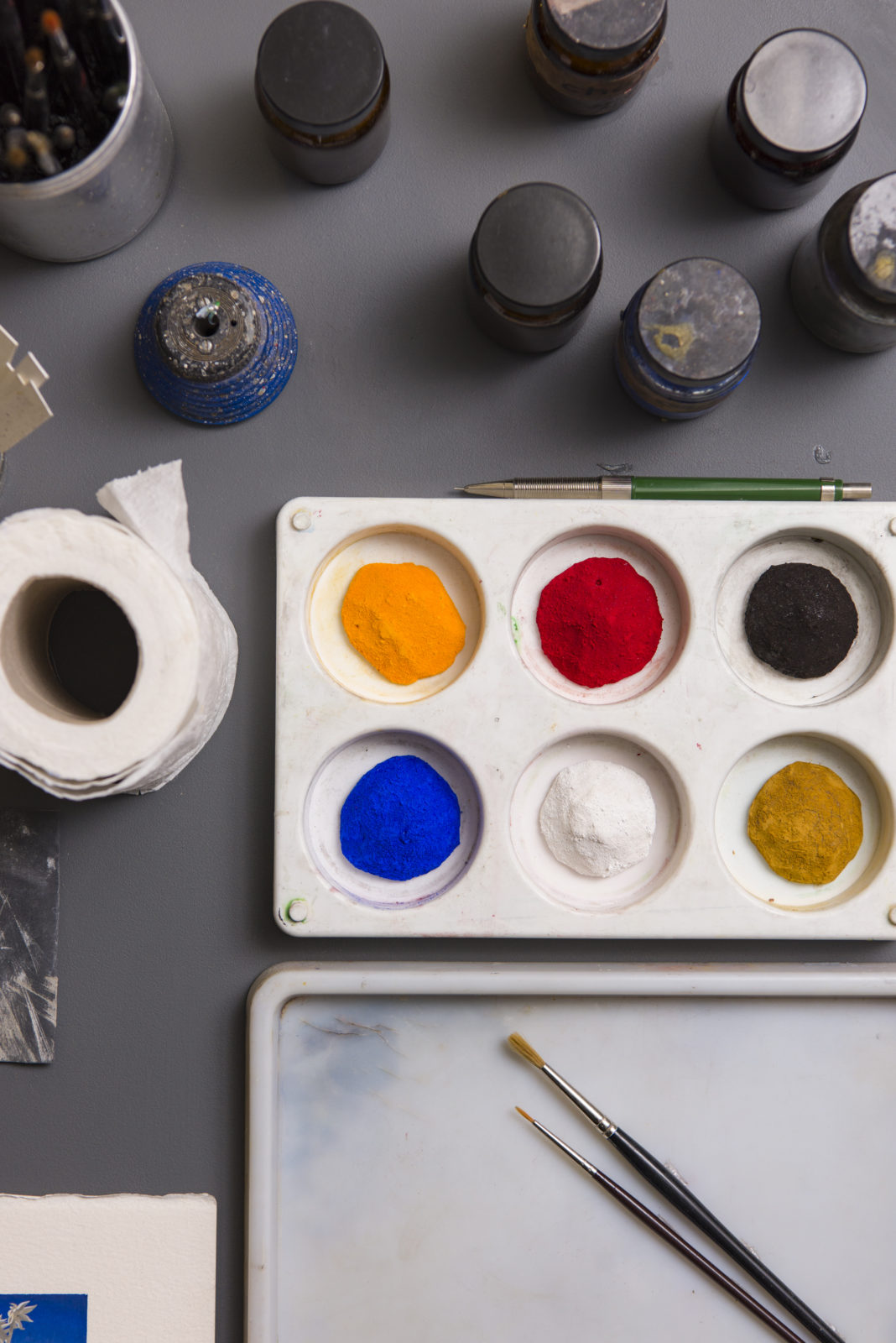
ANDREW GRASSIE: As a painter I am always looking for logical ways to restrict the multitude of possibilities as a way to break through the act of decision-making. I found a kids paint pot with six holes for mixing colours and that became one of my ‘givens’. I soon settled on a group of pigments that melted away easily into the egg yolk and gave me enough scope to approximate most colours: Cadmium Yellow, Cadmium Red, Oriental Blue, Mars Black, Titanium White and Raw Sienna. Mixing these pigments up with a little Whiting, you get to know the qualities of the paint quite intimately; their opacity, strength, texture and tonal limits. I have tried replacing one or more of the primaries with another pigment, say Lemon Yellow or Cobalt Blue. This can create a different light in a painting but also plenty of problems, so I keep returning to my familiar six. I find the changes that are exposed through repetition at least as interesting as those brought about by change for the sake of it.
I don’t like to fetishize the technique of tempera painting, but I suppose I do get a slight cheeky thrill from using a medium relegated to the dustbin of art history to reproduce my photographic snapshots. It’s simply a slow process, not well suited to smooth modulation and therefore rather perverse to use for this effect. The speed of the photograph seems frozen in my reproduction of the image. It’s just a quality of the medium combined with the technique that I noticed after having done it, rather than setting out to find it.
New Pigment in Production, with Onya MacCausland, Visiting Lecturer, Fine Art Department
ROBIN MASON: Onya, you’re bringing into production a series paints using pigments gathered from different places in the UK. Can you tell us the story about the two that excite you the most and why?
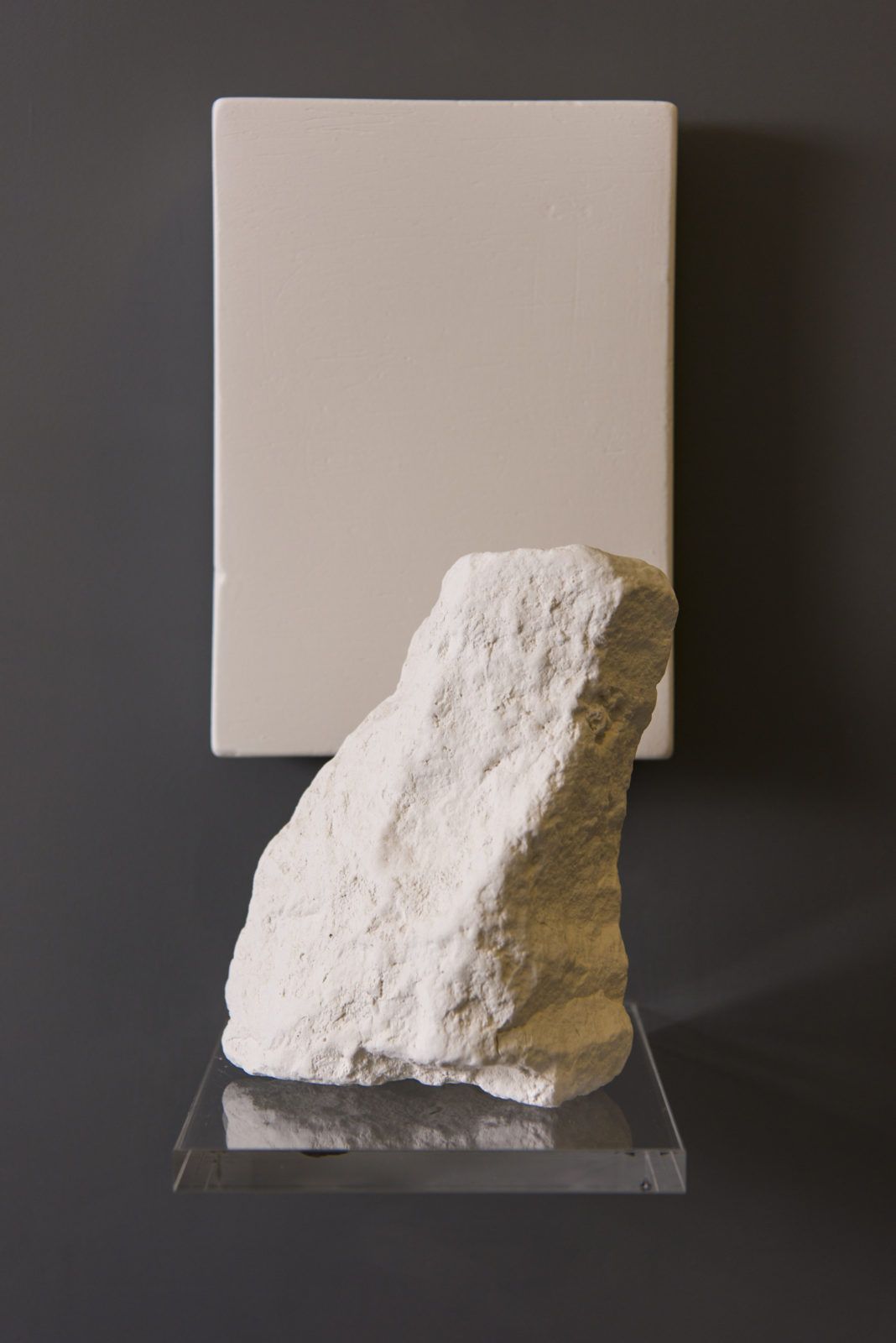
ONYA MACCAUSLAND: I’m working with iron oxide minerals (generically known as ochre) formed as waste, resulting from the treatment of polluting mine water. The mine water treatment process prevents contaminants from redundant mines reaching rivers and ground water in coal mining regions across the UK; the ochre is a waste product. I have discovered that some of these waste iron oxides, dried and milled, perform very well as pigment for paint, and I am working with the Coal Authority to make the colours available as pigment for the production of artists’ paint.
The landscape (and the process) is as is important to me as the colour; the landscape forms the colour. The physics and chemistry of the geology and the environment influence the colour, so it is a direct result of the way that particular landscape has been formed and then exploited. For example Deerplay Hill near Bacup in Lancashire is tinged with peat minerals seeping down and through into the empty flooding coal mines, which are then pumped back onto the surface. I use thin transparent layers of the pigment in oil medium to slowly build up the full dark of the colour over time. I realised as I began painting with it that Deerplay has a huge tonal register spanning a warm golden orange through to a purple darkness.
You can read the whole of their discussion below or download a pdf here. If you’d like to receive a hard copy of the leaflet, please email office@cityandguildsartschool.ac.uk

